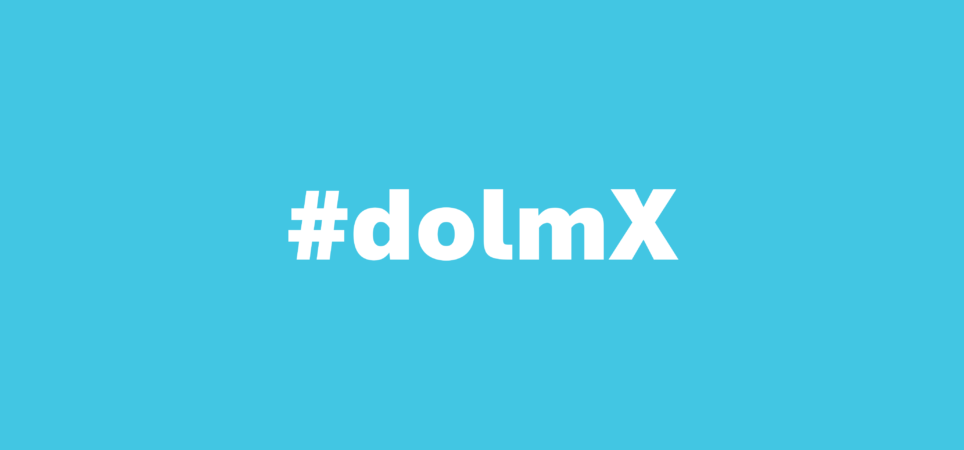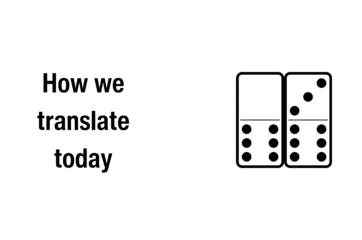One conversation, three voices:
why community interpreting matters

Public services should be available to everyone, regardless of the language they speak. Yet, for many people in Switzerland, access to healthcare, legal assistance, education, or social support still depends on whether they can express themselves clearly in the official language of the institution in which they are seeking help. That’s where community interpreting plays a transformative role.
Through dolmX, a video-based interpreting platform co-founded by SwissGlobal Language Services, professional interpreters can be booked quickly and securely to support real-time multilingual communication in various situations.
Why oral translation is central to inclusion
When we discuss translation, we often envision documents that need written translation. But in practice, much of the communication that matters most, such as discussing a medical treatment, giving testimony, or explaining a learning disability, is spoken. This kind of translation is called interpreting, and written translation can’t capture these moments.
Community interpreting enables people to participate in conversations that directly affect their lives by making essential information accessible in their native language or preferred language.
Simultaneous versus consecutive interpreting
Not all interpreting works the same way. At international conferences or the United Nations, simultaneous interpreting is used. Interpreters sit in booths and speak almost simultaneously along with the speaker, typically using headsets. It’s fast-paced, but best suited for one-directional speeches or formal events.
Community interpreting, by contrast, typically uses consecutive interpreting. Here, the speaker talks, then pauses. The interpreter listens, takes notes, and then speaks. This method creates a three-way conversation. It’s not just a dialogue, but a trilogue: speaker → interpreter → listener.
This structure is essential when clarity, accuracy, and empathy are needed. It ensures that nothing gets lost, especially in emotionally charged or difficult settings.
Examples of community interpreting
When it comes to real-life moments, interpreting isn’t a luxury; it’s a means of access and inclusion. Here are a few examples:
- Healthcare: A doctor explaining treatment options to a patient recovering from surgery.
- Legal settings: An asylum seeker describing their story in front of an immigration official.
- Education: A teacher and parent discussing a student’s learning support needs.
- Social services: A caseworker helping someone apply for housing benefits or navigate bureaucracy.
Non-verbal and visual communication
Language comes in many forms. While dolmX focuses on spoken interpretation, it also provides qualified interpreters for sign language, making sure people with hearing disabilities are equally supported.
The platform recognises that inclusion encompasses all forms of communication and that people with disabilities must be able to participate fully in society.
Interpreters don’t just translate words. They understand tone, hesitation, rhythm, and body language. These subtle cues often carry as much meaning as what’s said aloud.
A parent might say, “It’s fine,” but an interpreter can hear the uncertainty in their voice. A refugee might pause before speaking, where the pause says as much as the words that follow.
Interpreters trained in community interpreting know how to pick up on those moments and adapt accordingly. They support inclusive communication and connection.
What nature teaches us about interpreting
Interestingly, we’re not the only species that excels at interpreting meaning. All around us, nature is full of systems that rely on interpretation ─ some surprisingly complex.
- Elephants use deep infrasound that travels through the ground for kilometres. These rumbles carry emotional and practical messages to distant herd members.
- Squid communicate through colour, changing the patterns on their skin to signal aggression, attraction or camouflage. It’s instant, visual and precise, like sign language in the sea.
- Prairie dogs have warning calls that include the type of predator, its size and direction. Researchers have even found that they invent new calls for unfamiliar threats.
- Bees dance directions to nectar sources. Their waggle dance incorporates distance, direction, and quality, all of which are conveyed through movement.
These natural systems show that language doesn’t always mean words. Interpretation is everywhere; it’s how living things survive, cooperate and connect.
Community interpreters do this exact work every day, making sure people feel seen and heard in systems that aren’t always built for them.
dolmX: technology made for people
Designed for real-world needs, dolmX offers:
- A simple, secure online booking platform
- Certified interpreters for spoken and sign language
- Video connections from anywhere, with no travel delays
- Flexible billing, by the minute
- Encrypted, Swiss-hosted data
The platform is already in use across hospitals, courts, schools, and public offices, making community interpreting easy to integrate into daily operations.
But dolmX isn’t about the technology itself. It’s about people, about ensuring that a child’s school experience isn’t hindered by language, that a patient understands what’s happening to their body, or that someone seeking protection is truly heard.
At the heart of it all: inclusion
An inclusive society is one where people can participate fully, regardless of their ability, background, or language. Community interpreting is a crucial part of the infrastructure that makes this possible, ensuring everyone has access to essential services, rights, and opportunities.
As co-founders of dolmX, we’re proud to support the mission of accessible communication. Community interpreting is part of the broader field of translation and language services. Contact us today for inclusive, professional support across all your translation needs. Or reach out to dolmX directly if you need community interpreting.
-
Community Interpreting
DolmX
inclusion
Language Services
translation


